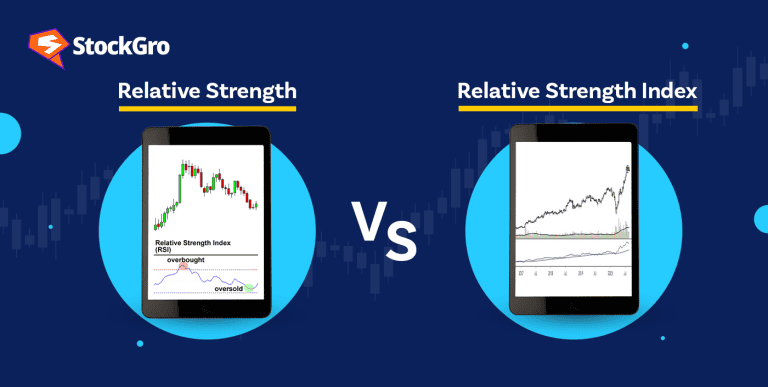
Are mathematical predictions of market fluctuations indeed possible? For decades, traders have been fascinated by this subject and have developed several trading techniques based on it.
Among these, the Gann theory, introduced by venerable trader W.D. Gann, stands out for its unique mix of geometry, mathematics, and even astrology. Gann’s techniques seek to find trends in time cycles and price movements, therefore providing traders with a disciplined means of market prediction.
Despite its complexity, Gann theory remains a widely discussed tool in trading circles, providing insights into market trends, entry and exit points, and potential reversals.
This article will examine the fundamental ideas of Gann theory, investigate its instruments, and go over how traders could apply them to guide decisions.
You may also like: Harmonic patterns: How to predict price actions with Fibonacci ratios
Who was W.D. Gann?
Renowned trader and thinker W.D. Gann, William Delbert Gann, had a lasting influence on the financial markets. Gann, who was born in Lufkin, Texas, in 1878, became well-known for his remarkable ability to reasonably accurately forecast market moves. Rooted in mathematics, geometry, and astrology, he established a set of original trading techniques over his lifetime that remain subjects of mystery and research even now.
Gann’s trading success was nothing short of remarkable. He is said to have achieved consistent profits by identifying repeating patterns in price and time cycles. His work emphasised the importance of understanding market psychology and historical trends to forecast future movements.
Gann’s theory, the cornerstone of his legacy, combines scientific precision and abstract principles to analyse price movements. Gann gave traders a road map for negotiating the complexity of financial markets by combining geometry, time cycles, and important pricing levels. His approaches still inspire traders and analysts all over, so his theories are pillars of advanced technical study.
Core principles of Gann theory
Time, price, and patterns
Gann’s theory stresses that essential components for comprehending market behaviour are the interaction among time, price, and patterns.
- Time cycles: Gann claims that anticipating market trends mostly depends on time. He thought that under the impact of recurrent events, markets follow predictable cycles. Analysing prior trends helps traders find certain timeframes for possible reversals or price swings.
- Price movements: Gann stressed that price and time should align to provide accurate predictions. When price movements correspond with specific time intervals, it indicates stronger and more reliable market signals.
- Patterns: Many times, markets show repeating trends that provide insightful hints for the next price movements. Understanding these tendencies will enable traders to predict changes and make wise judgements.
Also read: What chart patterns are used in technical analysis?
Gann angles
W.D. Gann developed a special instrument called Gann angles to track the time and cost relationship.
- Definition: On a chart, these diagonals show a constant time-price link. A 45° angle, for instance, shows a 1:1 ratio. That is, one unit of price change corresponds to one unit of time.
- Key angles: Other important angles help determine degrees of support and resistance or possible trend reversals: 2:1, 3:1, and 1:2.
Square of 9
- What it is: Based on the interaction between numbers, angles, and market cycles, the mathematical tool the square of 9 forecasts support and resistance levels.
- Application: Traders use it to determine price levels where significant turning points might occur by combining it with time analysis; the square of 9 offers valuable insights into future market movements.
How to use Gann theory analysis in trading
Identifying trends
Finding whether the market is in a bullish or bearish trend is among the main uses of Gann Theory.
- How it works: Important indications are Gann angles, such as the 1:1 angle (45°). Movement below the 1:1 angle points to a bearish trend; movement above it points to a bullish trend.
- Example: If a stock is consistently trading above the 1:1 angle, it signals upward momentum, guiding traders to look for buying opportunities.
Must read: How to understand stock market trends
Setting entry and exit points
Finding exact pricing levels for entering or leaving trades depends much on Gann tools, including the square of 9 and the Gann fan.
- Entry points: These instruments help traders find possible support levels where prices are probably to recover.
- Exit points: Resistance levels identified by Gann tools serve as targets for taking profits.
- Example: If the Gann fan indicates a strong support angle, a trader might place a buy order near that level. Similarly, the square of 9 can help pinpoint resistance levels for exits.
Timing market moves
In trading, timing is essential. Gann’s attention to time cycles helps one understand possible market reversals.
- How it works: Forecasts for future turning points are derived from historical time intervals, including past peaks and troughs.
- Example: Should a stock have a past of reversing every ninety days, traders should expect similar changes going forward.
Risk management
Gann’s theory emphasises disciplined trading by incorporating risk management strategies.
- Stop-losses: Traders can use angles or support levels identified by Gann tools to set stop-loss orders.
- Position sizing: Calculating risk based on the distance between entry and stop-loss levels ensures that trades align with overall capital management strategies.
By blending these aspects, traders can apply Gann theory to navigate markets effectively, balancing precision with prudent risk management.
Advantages and limitations of Gann theory
Advantages:
- Predictive power: Gann theory is highly regarded for its ability to predict market movements with mathematical precision. Its tools, such as the square of 9 and Gann angles, help traders anticipate key price levels and turning points.
- Versatility: Gann’s theory stands out for its flexibility, among other things. A great tool for diverse investors, it can be used on stocks, currency, commodities, and indices among other asset classes.
Limitations:
- Complexity: Despite its benefits, Gann theory is notoriously complex. It requires extensive study and practical experience to understand and implement correctly. Beginning users may find this high learning curve demoralising.
- Subjectivity: Traders sometimes view Gann angles, patterns, and time cycles differently. This subjectivity can lead to inconsistent application and results.
- Dependence on historical data: Analysing past price and time data is fundamental in Gann theory. Although it works well in many cases, it might not consider unanticipated, unexpected market occurrences, including geopolitical crises or economic shocks.
Bottomline
Through its emphasis on time, price, and patterns, the Gann theory, an interesting mix of art and science, offers traders a unique viewpoint on market dynamics. Although it has predictive ability and adaptability over asset classes, its intricacy and reliance on past data call for patience, devotion, and comprehensive knowledge.
Gann theory is a great tool for individuals ready to commit the time to find patterns, create smart entrance and exit points, and properly control risk. Like any trading strategy, though, Gann strategy must be matched with sensible risk management and market adaptation.
The Gann theory tells us ultimately that trading success depends on developing discipline and consistency rather than only market prediction.
FAQs
What is Gann’s theory in trading?
Developed by W.D. Gann, Gann’s theory forecasts market patterns by means of geometry, mathematics, and astrology. To grasp market behaviour, it emphasises on the interactions among time, money, and patterns. Important instruments for predicting support and opposition are Gann angles and the square of 9. Gann theory helps traders timing market moves efficiently, determine entrance and exit points, and spot trends.
What is the Gann 50% rule?
According to the Gann 50% rule, prices usually retrace to 50% of the initial move following a notable price change, up or down. Should the retracing be more than 50%, prices usually remain at the 62.5% level before reacting. A stock falling from ₹200 to ₹100, for instance, can rise to ₹150 (50% retraced) or ₹ 163 (62.5% retraced) before reversing direction.
What is Gann rule of 9?
In trading, the Gann rule of 9, also referred to as the square of 9, is a mathematical instrument for estimating support and resistance levels. It is grounded in the interactions of numbers, angles, and market cycles. Traders utilise it to pinpoint important price points where turning points might find a place. Combining it with temporal analysis gives the square of 9 insightful understanding of future market trends.
What are Gann indicators?
W.D. Gann created instruments called Gann indicators to forecast price swings and market trends. Important markers are the square of 9, which projects support and resistance levels, and Gann angles, which monitors the link between time and price. These signals give traders important information about future market behaviour since they enable them to spot trends, determine entrance and exit points, and properly time market movements.
What is Gann square of 144?
W.D. Gann created a market study tool called the Gann square of 144. It forecasts important market turning points and pricing levels using a 144 unit grid. Analysing the interactions of numbers, angles, and market cycles helps traders determine degrees of support and resistance. Making wise trading judgements and future market movement prediction depend on this instrument.

